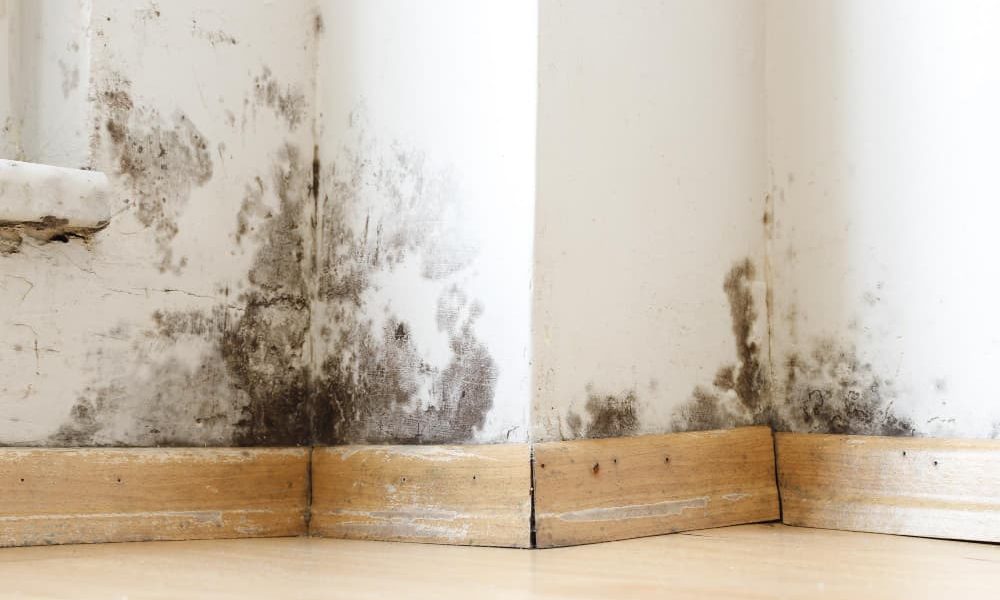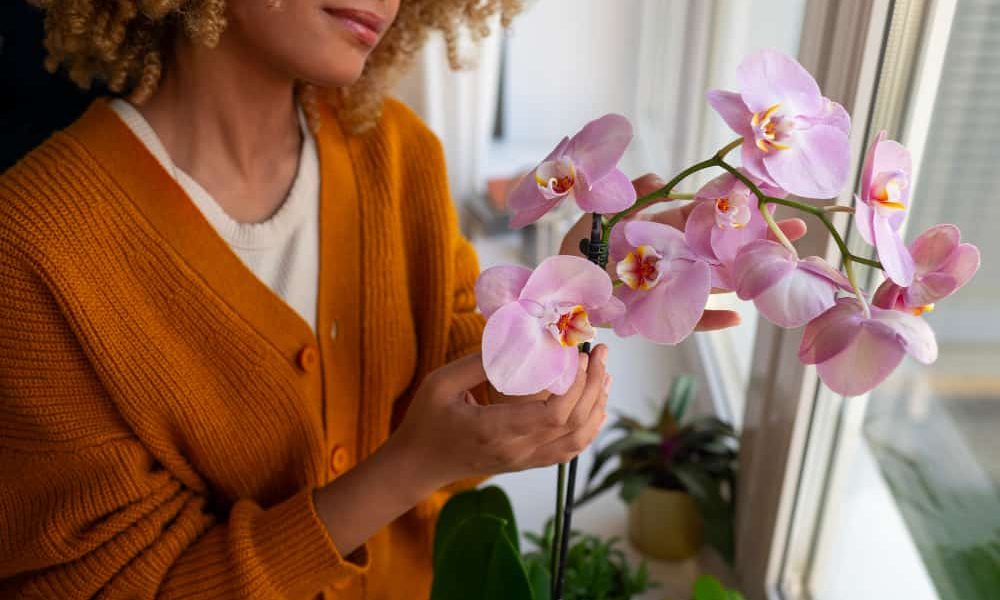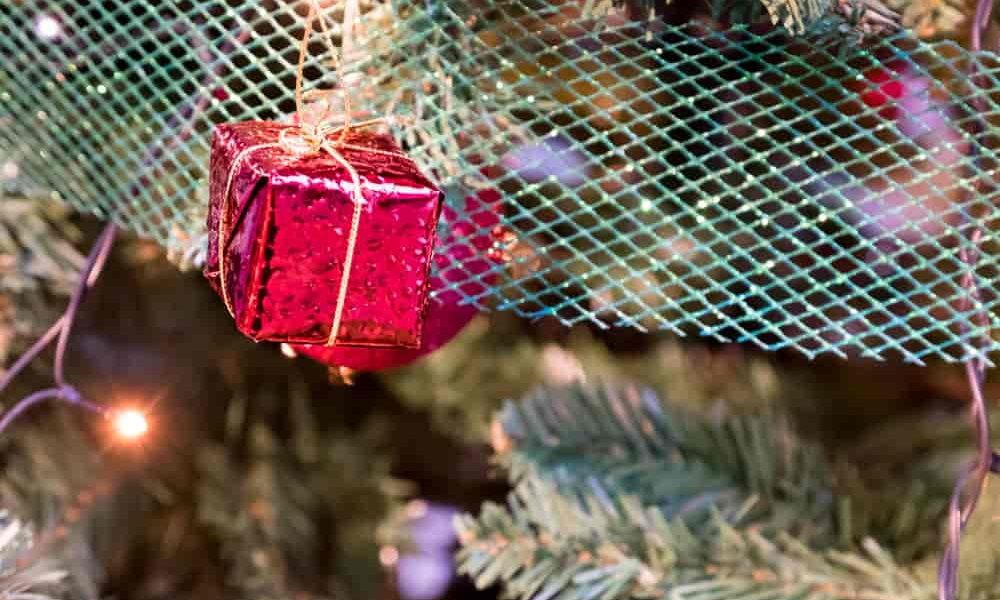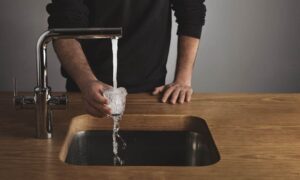In today’s world, sustainability and creativity are no longer just buzzwords—they are an essential part of how we live. Recycling and upcycling have become vital strategies in reducing waste, and for good reason: with landfills overflowing and our environment under increasing pressure, every little bit counts. One surprisingly fun and artistic way to help out the planet while sprucing up your home is by turning old magazines into unique and colorful DIY coasters or placemats.
If you’ve got a stack of old magazines lying around, instead of tossing them out or letting them gather dust, why not give them a new life? Magazine paper has a perfect combination of durability and flexibility, making it ideal for craft projects. It’s not only an environmentally friendly choice but also a way to showcase your personal style and creativity.
In this guide, we’ll walk you through the steps to create your very own DIY coasters and placemats out of recycled magazines. These beautiful, practical items can add a touch of color and flair to your home, and they make perfect gifts for family and friends. Whether you’re looking to start a new hobby, reduce waste, or simply love a creative challenge, this project is a perfect way to mix all three. Let’s dive in!
Materials Needed to Make Recycled Magazine Coasters or Placemats
Before we get started, let’s take a look at the essential materials you’ll need. Fortunately, this project is budget-friendly, as you can use items you likely already have at home. You don’t need to be an experienced crafter to take this on—all you need is a bit of time and patience to transform those glossy magazine pages into functional pieces of art.
- Old Magazines The most important item on the list! Opt for magazines that you no longer need or that have pages filled with vibrant colors. The designs and textures in fashion, lifestyle, or art magazines often offer a variety of hues and patterns, making your finished coasters and placemats more lively.
- Glue (Mod Podge or White Craft Glue) Glue is essential for binding the paper together and ensuring that your coasters and placemats hold their shape. Mod Podge, a versatile craft glue, works best since it doubles as a sealer to give your finished product a smooth finish. However, basic white craft glue will also do the trick.
- Scissors or Paper Cutter A good pair of scissors or a sharp paper cutter is necessary to cut your magazine pages into neat strips or shapes. You’ll need precision to ensure all your pieces are uniform in size for coasters or well-measured for placemats.
- Ruler For those who like things precise, a ruler can be helpful to measure your strips. If you want uniformity, especially when making placemats, this tool will come in handy.
- Varnish or Clear Sealant Spray To make your coasters or placemats last longer and protect them from spills, applying a clear sealant is a good idea. It will give them a glossy finish and make them more resistant to water damage.
- Cork or Felt Backing (Optional) If you’d like to give your coasters a non-slip surface, or if you want your placemats to feel sturdier, you can add cork or felt to the bottom. It’s an optional step but one that adds a professional touch to your final product.
- Toothpicks or a Thin Wooden Stick When working with rolled or coiled paper designs, a toothpick or thin wooden stick will help you maintain a neat coil as you roll the paper strips.
- Paintbrush (for applying glue) To apply glue evenly over your project, use a small paintbrush. It will help prevent any sticky messes and ensure that each layer of paper is well bonded.
Now that you have your materials ready, you can start thinking about the design and style of your coasters or placemats. Whether you want bright, vivid colors or a more subdued, earthy tone, the choice is yours. The beauty of using magazines is that you can find pages that match your aesthetic.
Sustainable and Eco-Friendly Material Choices
As you work through this project, one of the best things to remember is that by using recycled materials, you’re making an eco-friendly choice. Old magazines are often thrown away or recycled without a second thought, contributing to the massive amount of waste generated each year. Upcycling these magazines into something new not only reduces that waste but also helps prevent the use of new resources.
Moreover, crafting with what you already have at home means there’s no need to buy new materials, which also cuts down on your carbon footprint. If you’re interested in going the extra mile, consider using water-based, non-toxic glues and sealants. These eco-friendly options ensure that your project remains as sustainable as possible.
Even the small addition of a cork or felt backing can be made more sustainable by opting for natural or recycled materials. Felt made from recycled plastic bottles or natural cork is widely available and aligns perfectly with the theme of environmentally conscious crafting.
Tips on Choosing the Best Magazines for Crafting
When selecting magazines for this project, keep a few things in mind:
- Color Palette: Look for magazines with vibrant, bold images or graphics that reflect the color scheme you envision for your coasters or placemats. If you prefer a cohesive look, try to choose pages from the same magazine edition to ensure the colors complement each other.
- Texture: Thicker magazine pages work best because they hold up better during the crafting process. Pages with glossy finishes are easier to manipulate into shapes and offer a more polished look when completed.
- Theme: You can even choose pages based on a particular theme. For example, if you’re making coasters for a special occasion, like a birthday or holiday, you can cut out specific images or colors that fit the celebration.
By choosing wisely, you’re not only contributing to a greener planet but also creating something that reflects your personal style and adds a unique touch to your home.
These first two steps are the foundation of your recycled magazine coaster and placemat project. With the materials gathered and your design vision in place, you’re ready to dive into the crafting process. In the next section, we’ll walk through how to prepare the magazines and transform them into beautiful coasters and placemats. Stay tuned!
How to Prepare Magazines for Crafting
Once you’ve gathered your materials and selected your magazines, it’s time to start prepping the pages. Preparing the magazine pages properly is crucial for ensuring that the coasters and placemats you make are durable, neat, and visually appealing. Whether you’re rolling, folding, or weaving, careful preparation will make the crafting process much smoother.
Step 1: Selecting and Cutting Pages
Start by flipping through your magazines and picking out pages that have bright colors, interesting textures, or patterns that catch your eye. You’ll want to avoid pages that are too text-heavy unless you’re going for a more abstract or minimalist look.
Once you have your selection of pages, use a ruler and a pencil to mark straight lines on the magazine pages. The size of the strips will vary based on the project. For coasters, strips of about 1-2 inches wide work well. For larger placemats, you may want slightly wider strips—around 2-3 inches, depending on how large you want the final product to be.
Using a sharp pair of scissors or a paper cutter, cut along the marked lines to create even strips. Take care to keep the strips consistent in size, especially for placemats, where uniformity can make a big difference in the final appearance.
Step 2: Preparing the Strips for Rolling or Weaving
Depending on whether you’re making coasters or placemats, you’ll need to treat your strips differently. For coasters, rolling the strips is a popular method, while weaving is often used for placemats.
For rolling strips, take each strip and fold it lengthwise in thirds to make it more durable and thick enough to hold its shape when coiled. You can use a toothpick or thin wooden stick to help you get started with the rolling process. Simply wrap one end of the strip tightly around the stick and continue coiling the paper tightly until you reach the end. Dab a small amount of glue at the end of the strip to secure it.
For weaving strips, no need to fold them unless you want to add more thickness. You’ll need to lay the strips horizontally and vertically to create a woven pattern. This method works best for placemats since it creates a flatter, more stable surface.
Step 3: Organizing the Design
Now that you’ve cut and prepared your strips, it’s a good time to think about your design. If you’re making coasters, consider using different colored strips to create unique patterns—alternating between bold and subtle colors can create a visually interesting effect.
For placemats, you can create a uniform design by sticking with similar colors or mix it up by incorporating a variety of shades for a more eclectic look. You might even try creating a gradient by weaving darker strips on one side and gradually incorporating lighter shades as you move across the placemat.
Step-by-Step Guide to Making Magazine Coasters
Now that you’ve prepped your materials, it’s time to start crafting your coasters. This step-by-step guide will walk you through creating beautiful, durable coasters using recycled magazine pages.
Step 1: Create the Base of the Coaster
To start, take one of your prepped strips and begin rolling it tightly into a circular shape. As mentioned earlier, you can use a toothpick to help with the initial roll if needed. Continue rolling until you’ve coiled the entire strip. When you reach the end of the strip, secure it with a dab of glue.
Next, attach a second strip to the first by gluing the end of the second strip to the end of the first, then continue rolling. Repeat this process until your coaster reaches the desired size—typically, about 3-4 inches in diameter works well for most coasters.
Step 2: Seal the Coaster
Once you’re happy with the size, apply a generous layer of Mod Podge or glue over the surface of the coaster. This step helps to seal the layers together, making the coaster more durable. Let the glue dry completely before moving on to the next step.
After the glue has dried, apply a second layer of Mod Podge or a clear varnish to create a protective seal. This layer will help waterproof the coaster, ensuring that it can withstand moisture from glasses or cups.
Step 3: Optional—Add a Cork or Felt Backing
To give your coasters a more polished and professional look, you can attach a piece of cork or felt to the bottom. Simply cut a circle the same size as your coaster and glue it onto the underside. This will not only provide extra durability but will also prevent the coaster from scratching any surfaces.
- How to Make Larger Placemat Designs from Magazines
If you’re up for a bigger challenge, turning your old magazines into placemats is a fantastic way to upcycle while adding a personalized touch to your dining space. The process is similar to making coasters but requires more time and a few adjustments.
Step 1: Prepare the Magazine Strips
As with the coasters, you’ll need to cut and prepare magazine strips for weaving or rolling. However, since placemats are larger, make sure to use wider strips for better stability. You’ll also need more strips overall to cover the larger surface area of the placemat.
Step 2: Weaving the Placemat
To create a woven placemat, start by laying several strips vertically in front of you. Then, take additional strips and begin weaving them horizontally, alternating between going over and under the vertical strips. This process will create a sturdy and beautiful woven design.
As you weave, make sure the strips are pulled tightly together to avoid gaps in the design. Once you’ve reached the end of the placemat, use a bit of glue at the ends of each strip to hold everything in place.
Step 3: Rolling Method for Placemat
Alternatively, you can use the rolling method for placemats, just as you did with coasters, but on a larger scale. Begin rolling strips of paper into a large coil, just as you did for the coasters, but keep adding strips until the diameter reaches your desired size. This method can create a round placemat or even a large circular table centerpiece.
Step 4: Sealing and Finishing
Once your placemat is complete, apply a sealant just as you did with the coasters. This will make the placemat more durable and easier to clean. If you used the rolling method, you can also glue a piece of cork or felt to the back for extra support.
Whether you’re making coasters or placemats, these steps will help you create a beautiful, sustainable addition to your home décor while giving those old magazines a second life.
Now that you’ve learned how to prepare your materials and create both coasters and placemats, you’re well on your way to completing your DIY upcycling project. In the next section, we’ll dive into some creative design ideas and tips to help you personalize your coasters and placemats, ensuring each one is truly one-of-a-kind. Stay tuned!
Unique Design Ideas for Magazine Coasters and Placemats
Now that you’ve mastered the basics of creating magazine coasters and placemats, it’s time to get creative! One of the best aspects of working with old magazines is that no two projects will ever look the same. The wide variety of colors, textures, and images found in magazines gives you endless opportunities to customize your creations and make them uniquely yours.
Here are a few design ideas to inspire your next project:
- Color Coordination
- Monochromatic Theme: If you love a minimalist look, choose strips from pages with similar colors. For example, you could create a series of coasters or placemats that are all shades of blue or green. This approach creates a calming, cohesive look that works well with modern home décor.
- Vibrant and Eclectic: On the other hand, if you’re aiming for something bold and eclectic, embrace the chaos of multiple colors and patterns. Use strips from fashion spreads, advertisements, or artwork to create bright and exciting coasters that pop. This is a great way to give your dining table a fun, artistic vibe.
- Personalized Touches
- Themed Creations: You can choose magazine strips based on a theme—whether it’s nature, travel, or vintage advertisements. For example, for travel enthusiasts, select strips that show pictures of exotic destinations, maps, or cityscapes. It’s a perfect way to personalize your creations and reflect your interests.
- Text-Based Designs: If you love the idea of incorporating words into your coasters or placemats, use pages with large headlines or article titles. You can weave in certain words to create a visually intriguing design or even hide little messages in the strips of your coasters that can only be read up close.
- Artistic Embellishments
- Mixed Media: Combine your magazine strips with other materials, like fabric, paint, or stickers. For instance, after rolling or weaving your coasters, you can paint the edges with metallic colors or add gold leaf to give them a chic, modern touch.
- Layering: Another way to add texture and depth is by layering magazine strips on top of each other in varying colors. This adds a three-dimensional effect that makes each piece stand out.
These design ideas can help transform your basic coasters and placemats into true works of art, making them even more special and reflective of your personal style. With just a little extra creativity, you can produce something that’s not only functional but also a conversation starter at your next gathering.
Tips for Maintaining Your Recycled Magazine Coasters and Placemats
While magazine coasters and placemats are a fantastic way to upcycle, they do require some care to maintain their appearance and durability. Because the primary material—magazine paper—isn’t naturally water-resistant, following these maintenance tips will help your creations last longer.
- Sealing is Key
One of the most important steps in the creation process is sealing your coasters and placemats. A generous coat of Mod Podge, varnish, or a clear sealant spray will protect the magazine paper from moisture and spills. If you’re making coasters, consider applying two or three coats of sealant for added protection, as they’re more likely to come into contact with liquids from cups or glasses.
- Clean Carefully
When cleaning your magazine-based creations, avoid soaking them in water. Instead, wipe them down with a damp cloth or paper towel. For any stubborn stains, use a mild soap solution, but make sure not to over-saturate the paper. The goal is to keep them clean without compromising the structural integrity of the magazine strips.
- Avoid Heat
Since the coasters and placemats are made from paper, it’s essential to avoid placing them near direct heat sources. Hot mugs or plates may cause the paper to warp, so consider using heat-resistant coasters for hot beverages or placing a heat pad underneath any hot dishes on your placemats.
- Store Properly
When not in use, store your coasters and placemats in a dry, cool place. Excess humidity can cause the paper to soften or the glue to weaken, so avoid keeping them in areas like kitchens or bathrooms where moisture levels tend to be higher. If possible, stack them carefully or lay them flat to maintain their shape.
With these maintenance tips, your DIY magazine coasters and placemats will stay vibrant and functional for years to come. Plus, proper care will help prevent unnecessary wear and tear, keeping them looking as good as the day you made them.
Upcycling Beyond Coasters and Placemats: Other Magazine Craft Ideas
Once you’ve completed your coasters and placemats, you might find yourself looking for more ways to upcycle your old magazines. Luckily, there are countless other creative projects that you can try to make the most out of these colorful and versatile materials.
- Wall Art
- Rolled paper or woven magazine strips can easily be turned into beautiful pieces of wall art. You can create abstract designs, geometric patterns, or even custom portraits by assembling the strips in creative ways. With a simple frame, your magazine art can become a focal point in any room.
- Picture Frames
- Another great project is covering old picture frames with strips of magazine pages. You can roll, weave, or fold the paper and glue it onto the frame to give it a whole new look. This is an easy way to add a personal touch to your home décor or give a sentimental gift to someone special.
- Magazine Baskets
- If you’ve got plenty of leftover magazine strips, why not use them to make a sturdy, decorative basket? Simply roll the strips and glue them together in layers to form a basket shape. This is a functional way to store small household items while keeping your home eco-friendly.
- Recycled Paper Beads
- For those who love jewelry-making, try rolling magazine strips into beads! These paper beads can be strung together to create necklaces, bracelets, or earrings. This is a great way to repurpose old magazines while creating unique, wearable art.
- Gift Wrapping
- Magazine pages can also be used as eco-friendly wrapping paper. The colorful pages make for an eye-catching alternative to store-bought wrapping paper, and it’s a great way to package gifts sustainably. You can even make bows or other decorative elements by folding or rolling the paper.
These upcycling ideas are just a starting point. The more you experiment, the more creative ways you’ll find to repurpose old magazines. Whether you’re crafting coasters, placemats, or other items, upcycling is a fun and rewarding way to reduce waste while adding a personalized touch to your home or gifts.
With these additional project ideas, you can continue your journey toward a more sustainable and creative lifestyle. Not only will you help reduce waste, but you’ll also create beautiful, functional items that reflect your unique style. Keep experimenting with different techniques, and soon your home will be filled with one-of-a-kind pieces made from recycled materials!
Environmental Impact: Why Upcycling Magazines Matters
In a world where single-use products and excessive waste contribute significantly to environmental degradation, upcycling has emerged as a practical and creative way to make a difference. Recycling old magazines into coasters or placemats not only helps reduce waste but also extends the life cycle of materials that might otherwise end up in landfills.
Let’s take a moment to explore the broader environmental impact of upcycling and why projects like these matter.
- Reducing Waste
- Each year, millions of tons of paper products, including magazines, are discarded. Even though paper is often recyclable, many printed materials like magazines can still end up in landfills. Upcycling magazines into useful, long-lasting items helps divert waste from landfills, contributing to a reduction in overall waste production.
- By reusing existing materials, you minimize the demand for new resources. The process of creating new paper products from raw materials consumes significant amounts of water, energy, and trees. Upcycling, in contrast, requires minimal energy and repurposes what’s already available, thus reducing your environmental footprint.
- Promoting a Zero-Waste Lifestyle
- Embracing upcycling as part of your daily life fosters a zero-waste mindset. Instead of throwing away materials that no longer serve their original purpose, you begin to see the potential in repurposing them into something new. This mindset encourages conscious consumption and reduces your dependence on mass-produced goods.
- A zero-waste lifestyle emphasizes sustainability by rethinking how we use everyday items. Projects like DIY magazine coasters and placemats can inspire others to look at discarded materials in a new light, spreading awareness about the importance of reducing waste and living more sustainably.
- Conserving Resources
- The production of new goods, especially paper products, involves harvesting trees, consuming water, and using energy-intensive processes. Upcycling eliminates the need for these resources by using materials that are already available. Every small act of upcycling, like turning old magazines into functional décor, can contribute to a larger, collective effort to conserve resources.
- Furthermore, upcycled items often hold sentimental or artistic value that mass-produced items cannot match. When you create something by hand, it often becomes a cherished item, further reducing the cycle of consumerism and waste.
- Inspiring Creativity and Community
- Beyond the environmental benefits, upcycling also fosters creativity. It challenges us to think differently about the materials around us and to find beauty in items that might otherwise be considered trash. Crafting with recycled materials can also inspire a sense of accomplishment and pride, knowing you’ve created something unique and sustainable.
- Upcycling can also bring communities together. Organizing craft events where people can learn how to repurpose items, or sharing your DIY creations online, can encourage others to join the movement. The more people who embrace upcycling, the greater the collective environmental impact.
Upcycling isn’t just about making pretty things from discarded items; it’s about changing how we approach consumption and waste. With every project you complete, you’re contributing to a healthier planet, reducing your carbon footprint, and inspiring others to do the same.
Conclusion
Turning old magazines into DIY coasters or placemats is not just an enjoyable and creative project—it’s a meaningful way to contribute to environmental sustainability. By repurposing something as simple as a magazine, you’re taking an active role in reducing waste, conserving resources, and promoting a zero-waste lifestyle.
This project is also a great reminder that you don’t need to be a seasoned crafter or artist to make a difference. With a few basic materials, a bit of time, and some imagination, anyone can create beautiful, functional items that reflect personal style while also having a positive impact on the environment.
As you continue to explore the world of upcycling, consider the endless possibilities that lie in other household items. Whether you’re making wall art, jewelry, or storage solutions, upcycling offers a way to channel your creativity into eco-friendly projects that benefit both you and the planet.
So the next time you flip through an old magazine, don’t just toss it in the recycling bin—see it for what it could be. With a little effort, that magazine could become your next favorite coaster, placemat, or even a decorative basket. The possibilities are endless, and with each project, you’re contributing to a greener, more sustainable future.
Now that you’ve completed your DIY coasters or placemats, take a moment to appreciate the beauty of upcycling. Not only have you saved materials from the landfill, but you’ve also created something truly one-of-a-kind. Keep experimenting, keep crafting, and keep upcycling!







